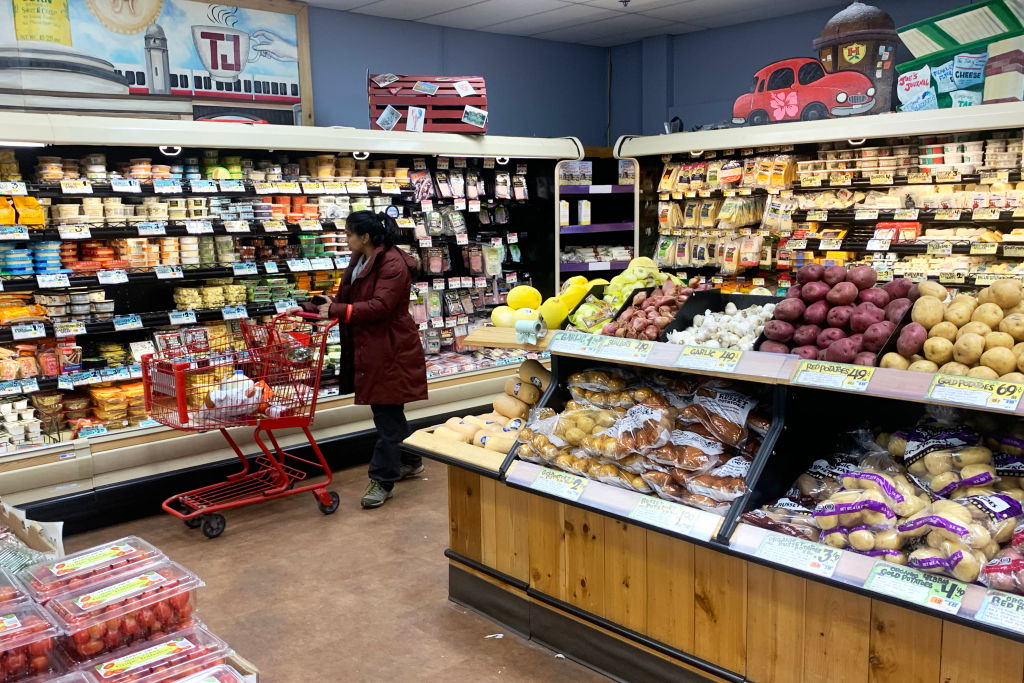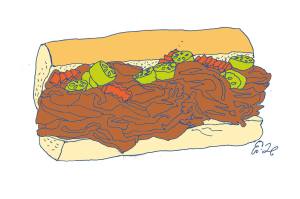The other day I attempted to have sushi rolls for dinner. I ended my night disappointed, and excited to go shopping for overpriced groceries.
Back in college, in central Jersey, I used to go to a Japanese restaurant in town, order the triple spicy roll combo, claim a student discount, and walk out with a perfect dinner for about $13. The filling was just pure fish, and enough spicy mayo to complement it. No crunchy flakes, no cucumber, no cost-cutting measures. Sure, it was a lot of rice despite feeling healthy, but I told myself the hours of studying would burn it off.
So the other night, with my wife at the office and out for a work dinner, I was on my own for dinner and went searching for my old college favorite. There was a highly rated sushi restaurant ten minutes away with a triple spicy roll combo for $20. At that price, the quality must be good. I landed on that establishment at lunchtime, and was looking forward to dinner all day.
Well. When I dug into the takeout container, I discovered that while the sushi rolls were very full — usually a good sign, meaning more fish and less rice — what they were full of was dense, soggy, oily tempura crumbs with a suggestion of questionably fresh fish. I felt like Kitchen Nightmares-era Gordon Ramsay as I disassembled a sushi roll and squeezed the filling, only to watch actual drops of oil ooze out. I might or might not have uttered Ramsay’s favorite NSFW catchphrase.
That can’t happen twice in a row, right? I decided to hit up a new local joint, put in my order, and while I waited for my second attempt at a sushi dinner, I wandered around the supermarket further down in the shopping center. I took a look at their hot bar, and had a little fun picking up the absolutely desiccated, rock-hard grains of “fried rice” and dropping them back into the steel pan. The second dinner was fine, if overpriced, but it was not my night.
When inflation hits the supermarket, the cost of your ingredients goes up. At my local supermarkets, boneless skinless breasts spiked by 50 percent overnight, from $1.99 to $2.99 per pound. Eggs regularly sit above $2.99 a dozen. Every extraneous little thing is twenty or thirty cents more. It isn’t that much money, but it feels like death by a thousand cuts.
On top of that, a rotating cast of seemingly random ingredients come and go. A couple weeks ago, hearts of palm disappeared. Before that, bronze-cut spaghetti. Now, refrigerator-section canned crab (it’s mostly from Indonesia; my local supermarket has switched to a Venezuelan product that comes in a plastic tub. I did not know we traded with Venezuela). Every one of these examples has its own story, but they all reflect the same phenomenon.
Now, I don’t eat crab or boil bronze-cut imported spaghetti every night, mind you. My little foodie diversion is just to say that your costs go up, and your selection might trend down a bit.
But when the same problems hit restaurants, your costs go up, and your service decreases, and your quality goes down. You end up paying $20 not for the same delicious sushi you once paid $15 for. You pay $20 for soggy breadcrumbs, and the Square machine asks you to choose between a 20 and a 30 percent tip. And you might have to beg for a napkin and a plastic utensil.
In other words, as prices rise and the economy gets tougher, buying groceries and cooking becomes an increasingly better option vis-a-vis dining out.
Restaurants are a brutal business, and no matter how much their business struggles, customers should never give them a hard time. But those same customers can absolutely choose to not come back. If you have enough money to cheerfully endure a mediocre meal and tip 30 percent in order to support a local business, you are unusually kind and unusually lucky.
We’re certainly seeing inflation here, but we might also be seeing a fundamental shift in the restaurant industry. It may turn out that restaurants will no longer pencil out at the quality and price level we have come to expect in the last couple of decades. Many more will close, prices will keep rising, and hopefully, eventually, we’ll find an equilibrium. There’s a good chance that equilibrium is fewer restaurants, less dining out, and higher costs per outing.
What that means is that cooking will look even better than it does now. Even if prices on everything from chicken breasts to crab keep ticking up, at least it’s the same product. And what you turn it into is entirely up to you.
The plastic bag tax might still get you, though. C’est la vie.


















